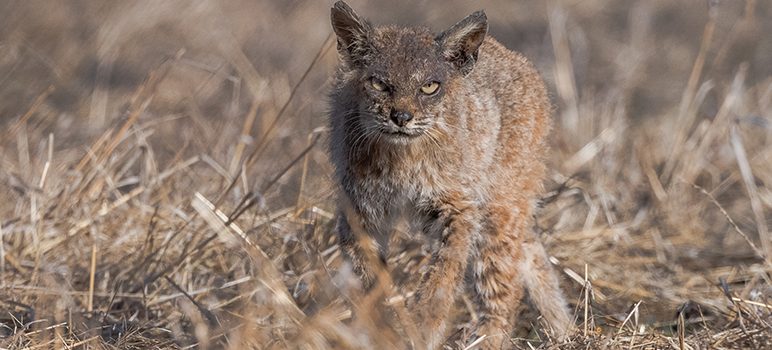Wildlife rescuers searching for an ailing bobcat in the South Bay say the animal is suffering from extreme mange likely brought on by exposure to harmful rodenticides.
The bobcat was spotted this week at the Coyote Valley Open Space Preserve near Morgan Hill, close to the entry and foot bridge, rescuers said Saturday.
The animal is not expected to survive without help, said Rebecca Dmytryk of WildlifeEmergency Services.
Research has linked mange to exposure to poisons used to control rats, mice, gophers, and ground squirrels, she said.
“Poisoned rodents don’t die right away—it usually takes a few days, during which time they become weak and disoriented and easily predated upon by bobcats, fox, owls, hawks, even dogs and cats,” Dmytryk said in a news release.
Sightings of the bobcat can be reported to Wildlife Emergency Services at 866.945.3911.
The wildlife group is urging residents to persuade pest control companies to switch to a non-anticoagulant poison or a no-poison alternative, to reduce risk to wildlife.
Under Assembly Bill 1788, signed in September by Gov. Gavin Newsom, the use of second-generation anticoagulant rodenticides is banned statewide until the state Department of Pesticide Regulation conducts studies.
The new law is effective Jan. 1 and provides exemptions for specified activities, such as agriculture, and use in locations necessary for public health and safety.


Sadly it is likely agricultural use affecting this cat and others including eagles, foxes, coyotes, and herons. More laws are needed that include agriculture.
It is all connected. People don’t properly protect their livestock. Livestock is killed by Coyote. People kill all coyotes they see, rodent population explodes, people put out poison, predators eat poisoned rodents. Poison is cheap and easy. We must make it not so.
Life is not easy for a bobcat in the valley of the coyotes. Life’s a niche and then you die.